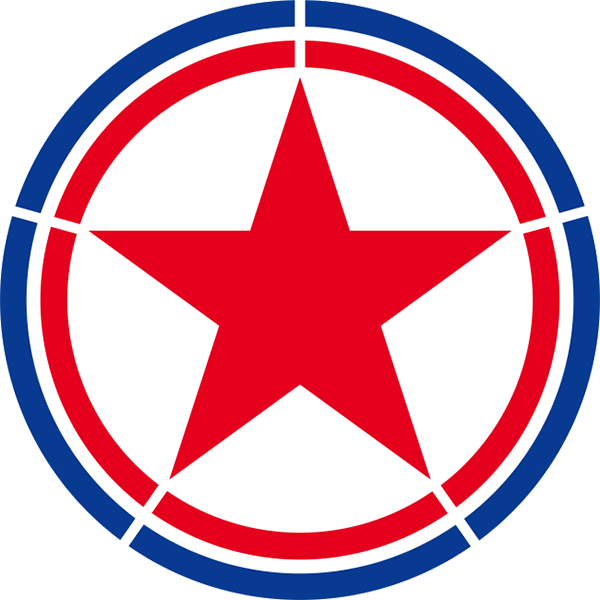Korean People's Air Force (KPAF)
Korean People's Army Air and Anti-Air Force (KPAAF) / North Korean Air Force (NKAF)
Democratic People's Republic of Korea (DPRK)
 Background Background
In 1946, the Korean Aviation Society became a military organization and initially was an aviation division of the Korean People's Army (KPA). During November 1948, the air force became an independent military branch of the Democratic People's Republic of Korea (DPRK) under the command of General Van Len with the aviation corps under the command of General Wang Yong (Young) with vice-commander Major General Lee Whal. Officially, the Korean People's Army Air and Anti-Air Force (KPAAF). In English sources known as North Korean Air Force (NKAF).
In 1949, the Soviet Union shipped 145 World War II era aircraft considered obsolete by the Voyenno-Vozdushnye Sily (VSS) Soviet Air Force to North Korea including La-9, Il-10, Yak-3, Yak-7B and Yak-9. North Koreans were selected for military flight training and the new North Korean Air Force was modeled on the Soviet Air Force.
Korean War
At the start of the Korean War, the North Korean Air Force was comprised of the 1st Air Division had roughly 132 combat aircraft and 30 transports and trainers. In the first days of the war, they dominated the tiny South Korean Air Force that had only 16 combat aircraft, 16 liaison and trainers with only 57 pilots and only 39 considered trained. During the Korean War, their principal opponents were the United Nations (UN) forces including the U. S. Air Force (USAF) Far East Air Force (FEAF) with over 1,172 planes including 504 F-80 jets plus F-51, F-82, B-26, B-29 and transports and reconnaissance planes, U.S. Navy (USN) and other UN aircraft.
In 1950 the KPAAF was under the command of General Wang Young. Early pilots included Major Kim Hi-Kiung and Major Tae Kuk-Sung who flew the Yak-9P fighter. Later, trained as a MiG-15 pilot and promoted to Colonel and commander of a regiment in the 1st Division. Later, promoted and became the vice-commander of the 2nd Division.
At the start of the Korean War, KPAAF Yak-9P defended Pyongyang but suffered heavy losses flying against F-51 Mustangs and F-80 Shooting Stars.
During 1951 began training pilots in Manchuria in northern China at dispersed airfields including Kilin Airfield for primary flight training then Antung Airfield (Dandong) for MiG-15 jet training.
1st Air Division
Commander: General Wang Yong
Vice-Commander Major General Lee Whal
2nd Air Division
3rd Air Division
4th Air Division
Korean War Officers
Major Kim Hi-Kiung
Major Tae Kuk-Sung one of the first North Korean pilots trained by the Soviets before the Korean War, Yak-9P pilot
Captain Ahn Sun-Duk good pilot but avoided combat
defended bridge in Pyongyang, resigned to non-combat duty
Kil Won-Nam (Naval Academy at Chongjin) cut engine during flight training with Yak-11, transferred to infantry
No Kum-Sok (Naval Academy at Chongjin)
References
A MiG-15 to Freedom: Memoir of the Wartime North Korean Defector Who First Delivered the Secret Fighter Jet to the Americans in 1953 (1996, reprinted 2007) by No Kum-Sok pages 76 (General Wang Young), 78 (Major Tae Kuk-Sung), 85 (VSS Col Kozhedub 324th IAD at Dandong/Antung)
MiG Alley: The Fight For Air Superiority (2000) pages 1
Fury From The North (2018) details the The Korean People's Air Force (KPAF)
Contribute Information
Do you have photos or additional information to add?
|
 Background
Background